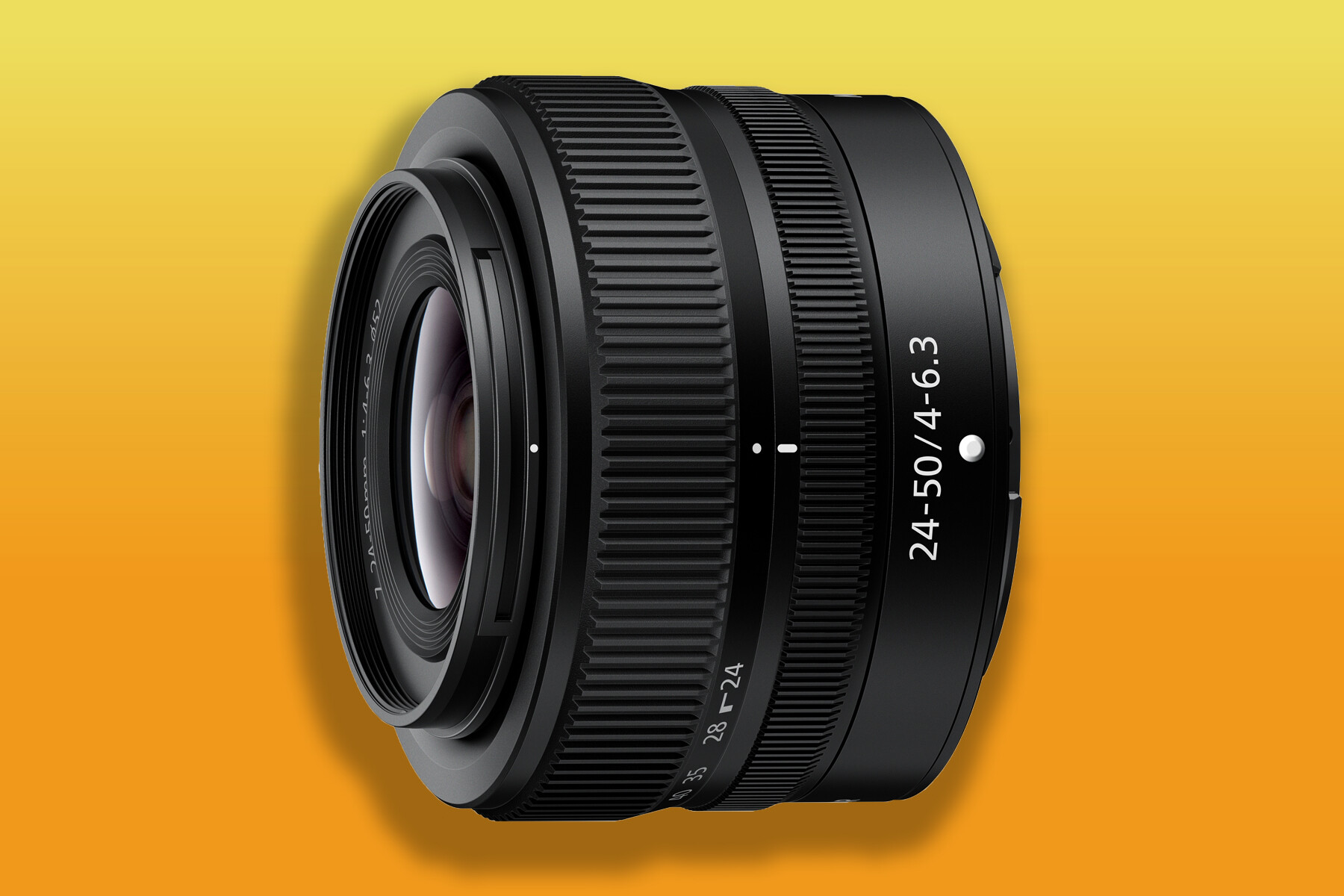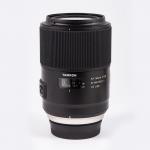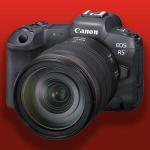
Nikon Z 5 test: full-frame temptation
Posted on Sep 23, 2020
Shooting full-frame photographs comes at a cost, in money and in bulk. The mirrorless Nikon Z 5 aims to keep both to a minimum, but how well does it do?
The Z 5 is the third in Nikon’s line-up of mirrorless full-frame cameras. The Z 6 has hybrid leanings with a feature set that will appeal to still and video shooters, the Z 7’s sell is its 45.7 megapixels, and now the Z 5: an entry-level model with 24.3 megapixels under its bonnet. There’ll be many happy to argue the semantics of what entry-level actually means, but the long and short of it is that the Z 5 is Nikon’s cheapest full-frame mirrorless camera, priced at £1719 with the 24-50mm f/4-6.3 zoom.
Its body form is essentially the same as its two brothers – it’s just 2mm deeper – and it’s not just size that’s shared. The Z 5 has a five-axis in-body sensor-shift image stabiliser with 5EV benefit, 273-point autofocus system with human/animal eye detect and a high-resolution electronic viewfinder with 3690k dots. Of course, there are design and feature differences, most notable being that the Z 5 has a lower-resolution 1040k dot touch monitor, there’s no top-plate LCD, its maximum shooting speed is 4.5fps and, for those keen on video, the Z 5’s 4K video comes with a 1.7x crop, although Full HD is full-frame. The Z 5 is the first Z full-frame mirrorless with dual card support with two SD UHS-II card slots.
Resolution from the front-side illuminated sensor is quoted at 24.3 megapixels, working with Nikon’s Expeed processor to give a top ISO of 51,200, expandable to 102,400, and the option of 12- or 14-bit Raw capture.
Camera control layout is typically Nikon, with the on-off control on a collar around the shutter button, and ISO, video record and exposure compensation buttons nearby, perfect for the forefinger, and the exposure mode dial is nearby. This is firmly click-stopped, but there’s no lock available. A decently sized AF-ON button falls nicely to the thumb, with a focus joystick below, which I found could use without having to adjust my grip.
Click the images to see a larger view
Performance: ISO
For this ISO test, the Nikon Z 5 with 24-50mm lens was fitted to a Manfrotto BeFree GT carbon tripod. High ISO and long exposure noise reduction were both turned off, and the Raws were processed through Lightroom with default NR set. The base exposure for the ISO 100 twilight shot was 3secs at f/8.
The Z 5 produced a competent noise performance and I’d be happy shooting at ISO 1600 and ISO 3200 as noise had little impact on fine detail and, if there is any, grain is fine and neutral. With a little work in software, you could get excellent big prints from these high speeds.
It’s only when you venture beyond ISO 6400 speed that noise is much more obvious and the image softens and saturation suffers. A very creditable high-ISO noise performance from the Z 5, with its front-illuminated sensor.
Click the images to see a larger view
The Z 5 comes supplied with the EN-EL 15C battery, which is claimed to be more efficient than the 15b and claims to give 390 shots via the EVF. The good news for existing owners of a range of Nikon cameras is that the original EL-EN 15, 15b and 15C are the same size so cross-compatible, albeit with lower capacity – this is with Nikon’s own cells, as a couple of third-party 15b cells I tried were rejected by the Z 5. The Z 5 cell can be charged via its USB 3.2 port using a power bank or mains charger and the camera can be used at the same time, which is potentially a big benefit.
Look through the Z 5’s EVF and you’ll find an excellent image, with panels top and bottom showing plenty of camera setting info without encroaching on to the image. The screen’s high resolution reveals plenty of detail and also comes in handy when using the focus magnifier to closely inspect focus. There are two magnification settings and if you touch the shutter release, the camera takes a few moments to sharpen up details to help you ensure sharp focus.
Around the camera’s front are two dedicated function buttons easily engaged with the middle and fourth fingers of the right hand and each has 39 functions that can be assigned.
Four more controls on the body can also be reassigned to different functions, plus up to three on the lens – on the supplied lens, the focus ring can be set to behave like a normal aperture ring. The i button offers a fast way of accessing your most frequently used settings. Push the i button and a grid of 12 boxes appears and you can edit what’s available via its menu from 35 options. Selecting what you want can be done with the multi-directional thumb pad or by touch.
Push the DISP button and you scroll through display options. There’s a full display, one showing key settings only, there’s live histogram and spirit level and, finally, you get the ‘i’ menu. For me, the one missing is a plain-screen option where all you see is the picture. Even the most minimal option at the moment has a range of data across the bottom of the image and, while you can check the uncluttered composition through the EVF, that defeats the point of using the monitor in the first place. Perhaps Nikon could offer the option via a firmware update.
The data items within outlined boxes are the ones that can be activated and adjusted by touch with on-screen virtual pointers.
As for the monitor itself, its resolution is lower than its brothers, but the image is still good and the touch feature works well. There is a noticeable lag with the touch shutter/touch AF option, so that needs bearing in mind for subjects like street shooting when timing is important, but the touch AF and repositioning AF point features are responsive enough.
Nikon claims a 5EV benefit with the IBIS system. I did some handholding tests with the 24-50mm lens at 50mm using the mechanical shutter. If you assume 1/60sec is the safest non-stabilised shutter speed to use, then a 5EV benefit would be 1/2sec, so I took sets of shots from 1sec to 1/15sec. In my test, I got the odd sharp shot, but mostly failures at 1sec and 1/2sec and enjoyed much greater success at 1/4sec and 1/6sec, so for me the realistic benefit was more in the order of 3.5EV rather than 5EV, but that is still a very useful feature.
Performance: exposure latitude
A nine-shot exposure bracket of a sunlit scene was shot to try out the Z 5’s Raw’s exposure flexibility – seven shots are shown here. The under- and overexposed Raws were exposure corrected in Lightroom.
Underexposed Raws corrected very nicely in Lightroom and the recovered images looked good, even the -4EV shot, though it did display a little noise in even tones. That level of noise fell with the -3EV shot and continued to improve, with the -2EV shot giving a result indistinguishable from the correctly exposed frame. Overexposure was handled less well, with the +4EV shot unacceptable and the +3EV shot exhibiting a colour cast and high contrast. That colour cast was still evident with the +2EV image and only went at +1EV to match the correctly exposure frame.
If you need to rely on the Z 5’s exposure latitude, then hope for underexposure, because in this test, the grossly underexposed Raws recovered very nicely.
The 24-50mm f/4 kit lens is compact and lightweight. It collapses down with a twist of the zoom barrel to around the size of a typical 50mm f/1.8 standard lens. Lens size is very impressive, but it comes at a price, and a 50mm f/6.3 is nothing to write home about. A lock on the zoom barrel would have been nice, because I did find myself going past the 24mm mark and collapsing the lens by mistake, and you get a warning if you turn on the camera when the lens is collapsed. Lens performance was decent, being marginally superior at the 24mm end with better contrast and sharpness than the 50mm.
The camera’s overall performance was consistently skilful. Autofocus, thanks to its 273-point hybrid phase/contrast detect AF points covering most of the image area, was impressively fast, silent and accurate with minimal hunting. It’s sensitive, too, and there’s a low-light AF option that works down to -3EV at ISO 100. Face/eye detect worked respectably well, but the Z 5’s is not as sensitive or have that tenacious ability seen in other (more expensive) cameras when there’s a subject moving around the scene or if they turn their head away.
AF performance was consistently good though and there’s a selection of AF areas that can be used, including pinpoint, single point, dynamic area AF and two wide area settings.
Exposure was also consistently accurate. I shot mostly in aperture-priority AE and Matrix light measurement, which coped admirably with most scenes including when contrast levels were high and in
strong backlighting. With the good exposure latitude of the Z 5’s Raws, there was the option of pulling in highlights and lightening shadows for good-looking shots.
Performance: Nikon Z 24-50mm f/4-6.3
This lens sells for £439 and it’s the smallest, lightest full-frame zoom lens on the market. It has a retractable design around the size of a 50mm f/1.8 lens when folded, and you get a warning to remind you to set the lens to its working position.
It’s a decent lens, giving good edge-to-edge sharpness at wide and mid apertures. There’s significant vignetting at 24mm and f/4 and needs stopping down to f/8 to get rid of it. Vignetting at other focal lengths is evident, too, strongest at 24mm. The Z 24-50mm f/4-6.3 is a decent kit lens and worthwhile if you want to travel really light.
- Construction : 11 elements in ten groups.
- Special elements : Three ED glass, three aspherical
- Coating : Super integrated coating
- Aperture range : f/4-6.3, f/22-36
- Minimum focus : 35cm
- Weather resistant : Yes
- Filter size : 52mm
- Dimensions : 73.5x51mm
- Weight : 195g

Verdict
Full-frame mirrorless rivals like the Canon EOS RP – currently £1400 with a 24-105mm lens – make the Nikon Z 5 with the 24-50mm look expensive, despite its entry-level tag. That said, I think the Z 5’s guide price will drift downwards after a few months in the shops, so deserves a close look by those with no system affiliations.
For current Nikon DSLR users looking to go mirrorless, the Z 5 offers a very plausible proposition, but at current prices you could buy the Z 6. It’s two years older and takes expensive cards, but with the FTZ adapter costs £1649, so you would have a 4K-friendly, slightly higher-spec camera and the option of using existing lenses. The choices are many, and if you decide to take the Z 5 route, you’re not going to be disappointed, because it’s a capable camera.
Pros: Lovely viewfinder, two SD slots, good battery life, handling, capable high ISO skills, audio in and out
Cons: 4K comes with a 1.7x crop
For more information, please visit the Nikon website.
As featured in issue 81 of Photography News.





















